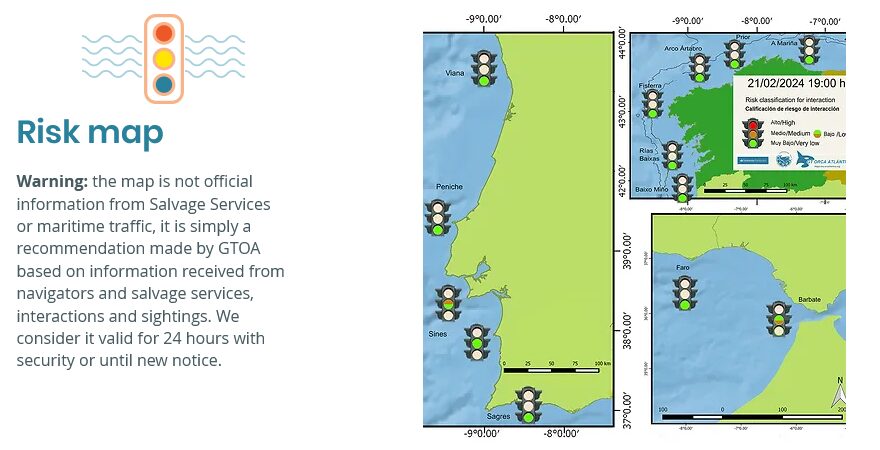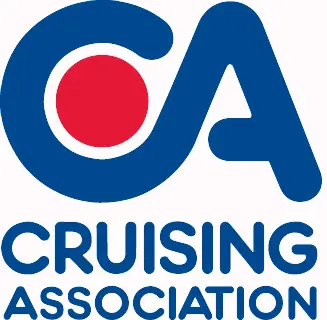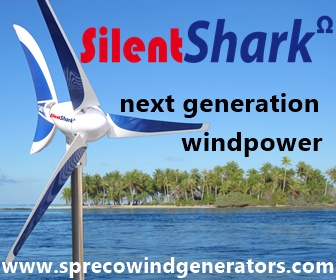Atlantic Iberian Peninsula [“Orca Alley”]: Passage Planning Part 4
Since the start of 2024 we have been publishing guidelines in collaboration with the Cruising Association (CA) as to how you can best-prepare for a passage around the Atlantic Iberian Peninsula, now that the risk of an orca interaction is a concerning factor. Having already covered passage planning tips, pre-departure preparation, FAQs and what to do at sea should you encounter orcas, in the final article this month we are taking a look at the anticipated movement of orca over the cruising season.
Published 3 weeks ago, updated 2 weeks ago
Passage Planning for the Atlantic Iberian Peninsula
Read Part 1. Passage Planning HERE.
Read Part 2. FAQs HERE.
Read Part 3. What to do at sea should you encounter orcas HERE.
Part 4: Analysis of Orca locations by the Cruising Association (CA)
Having been approached by sailors asking for guidance on transiting the Iberian Peninsular, the CA have analysed the movement of the orca over the last 4 years in collaboration with GTOA and produced a monthly location table (see link below).
The table clearly shows orca/yacht interactions since 2020 for a number of different locations around the Iberian coast. Sailors can review the pattern of interactions from previous years when planning to sail through the affected area to assist with passage plannng and strategy.
ORCA – HISTORICAL INTERACTION LOCATION DATA TABLE
Historical Movement of Orca around the Iberian Peninsular
The table shows numbers of interactions in different sections of the coastline each year on a month-by-month basis. The numbers are taken from the GTOA monthly maps (www.orcaiberica.org) which is the most comprehensive record of interactions available and dates back to the beginning of the problem in 2020.
However, it cannot be regarded as a 100% accurate record and the table and following statements should be considered with that in mind. The table also highlights some (occasionally very significant) variations from year to year and so relying purely on advance planning will not guarantee the best chance of avoiding an interaction.
Skippers must keep continually up to date with where the orca are currently active.
Analysis
Interaction numbers have been relatively low between December 2023 and April 2024, although it seems likely that this could be influenced to some unknown extent by the numbers of yachts transiting the affected area during this period. Interactions occur across the widest geographical area from July to November, although numbers are at a peak between June and September and tail off during October and November.
Highlighted in green are cells where there have been no interactions in that section of coast in any year for that particular month. This suggests that May is the favourite month to move. The only recorded interactions in any section of coast during that month since the problem began are in the Straits of Gibraltar and we know that transiting this area in the shallow water route on the Spanish coast presents a minimal risk. North of Lisbon there have been no recorded interactions in May or June so far, but it should be noted that in 2024 for the first time in April there have been interactions in that area.
The area with the highest number of interactions is the Straits of Gibraltar. However, by using the shallow water route this need not be unduly feared as long as crews take the usual precautions for shallow water sailing and move in suitable weather conditions. The shallow water route is much discussed on social media and the theory initially aired on social media from an early stage has been supported by data from CA reports (only one of 158 interaction reports was in water depth of 20m or less). No interactions in the Straits have been recorded in September.
The CA plan to publish this data on their website and keep it updated.


Know where the orca are currently active
While all the detail in the CA/Noonsite series is incredibly useful, advance planning only should not be relied upon when transiting this coast. It is very important that skippers keep up to date with where the orca are currently active by using the GTOA’s interaction and sightings app, “GT Orcas”, along with another app, Orcinus, each of which record current activity. There are also various other platforms with skippers recording sightings and interactions that you can also follow.
- GTOA Traffic Lights Risk Map
- GT Orcas
- Orcinus
- Orcas.pt Facebook Group (with Telegram groups for sharing info.)
- Orcas.pt You Tube Channel
- Orca Attack Reports Facebook Group
What we do know:
- Interactions peak between June and September, with reduced interactions during the winter.
- Past behaviour indicates orca activity is concentrated in the Strait of Gibraltar from April to early July as the bluefin tuna exit the Mediterranean, then many of the orca locate elsewhere.
- In April 2024 orca interacted with a yacht off the Galician coast, the first time orca have been active so far north this early in the season (link to news).
- Orca movements are unpredictable. At times, they disperse and then simultaneously appear in disparate locations.
- Orca have almost never interfered with yachts in inshore waters (less than 20m depth), or a long way offshore.


Remember to Submit a Passage Report!
Encounter or not – every passage is important and the CA needs that data!
Help scientists better-understand by providing details of your experience completely anonymously. Give valuable data to help both orcas and sailors.
Whether you experience an interaction or uneventful passage, submit a report to the CA’s report database:
- Report an Interaction: https://www.theca.org.uk/orcas/interaction-report-form
- Report an uneventful passage through an area of current interaction activity: https://www.theca.org.uk/orcas/uneventful-passage-report-form
Discover, learn, share and help others
https://www.theca.org.uk/orcas
……………………………………………………………….

The Cruising Association [CA] has been collecting data since June 2022, in collaboration with Grupo de Trabajo Orca Atlántica [GTOA], both from skippers that have encountered orcas and those that have had an incident-free (uneventful) passage in areas of on-going orca interactions, along this coast. This valuable data has enabled a huge library of reports and guidance to be established for yachts, which continues to grow as more passage reports are received. If a passage through “orca alley” is in your plans this year, be sure to use the CA’s free resources to stay informed as well as contribute to this incredibly important project post-passage to help keep both sailors and orcas safe.
……………………………………………………………….
Our thanks to the CA for collaborating on this series of articles to help sailors transiting the Iberian coastline:
- Read Part 1: Passage Planning Tips (January 2024)
- Read part 2: FAQs Prior to Departure (February 2024)
- Read part 3: What to do at sea should you encounter orcas (March 2024)






First yacht sunk in 2024 because of orcas😞 (15m sailboat), May 12th, 2024, 14 miles from Cape Spartel at the southern entrance to the Strait of Gibraltar.